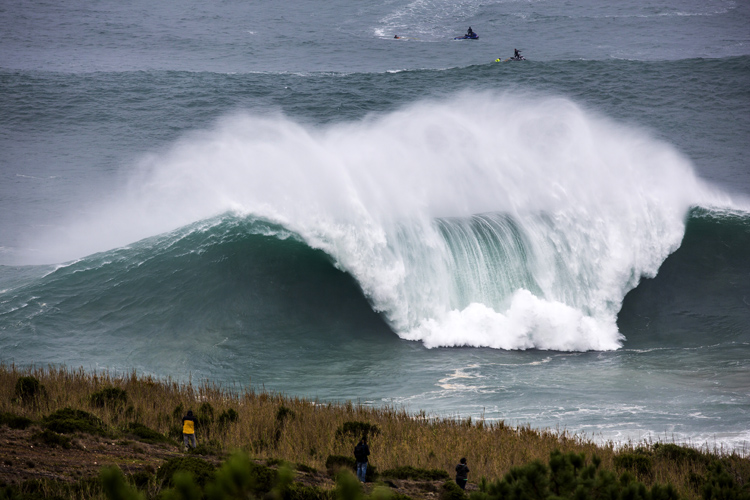A group of university researchers and high school students has teamed up to raise awareness for ocean literacy and scientific knowledge in ocean management.
How do you explain the giant wave of Nazaré? How does the underwater canyon work to deliver the biggest waves on the planet? "The Nazaré Wave: A Trigger for Learning" aims to teach and involve everyone: young students, the general public, and academics.
Portuguese students from the Gama Barros High School, in Sintra, produced a short video in which they explain how swell, the wind, and a submarine channel interact to produce the record-breaking waves seen at Praia do Norte, in Nazaré.
The surf forecasting concepts of wave height, wave period, shoaling, refraction, and convergence were simplified so that ordinary people understand them.
"When the morphology of the sea bottom is uniform, wave refraction is pretty much the same along the coast," the students tell us.
"But imagine that there is a headland that juts out into the sea. In this case, when waves tend to line up parallel to the shore due to refraction, there is a convergence zone. And in this area, waves are higher."
The video is straightforward. You'll rapidly learn why the Nazaré waves are so unique. The oceanographic project was led by Nova University and funded by the European Economic Area Financial Mechanism.
